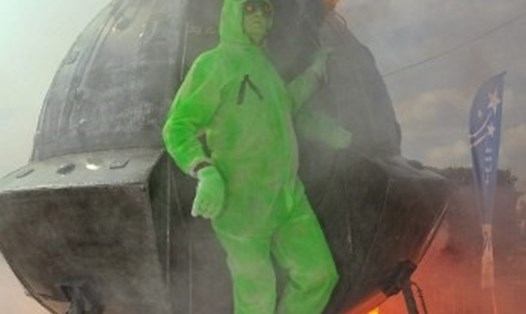A series of unidentified flying objects were seen in the sky of Sydney on the morning of August 19, causing residents to be extremely shocked. Accordingly, residents living in the southern coastal waters of New South Wales to Sydney all observed strange light in the early morning of August 19.
They are not sure what the object they have observed, but many predict it could be satellites or even UFO.
A New South Wales resident shared that the objects appeared to be "parading in the sky".
"It seems like a slow-moving satellite or something. It's very strange," said another resident.
Another person even said that strange lights look like "a full moon".
"I thought it was a space station. I think the sun is shining on it so it moves more slowly than a regular space station," said a New South Wales resident.
Many others joked that it could be an artifact observing the Earth's condition in 2020 and deciding to return to their planet.
However, the solution to these objects was quickly determined to be from the launch of SpaceX's Starlink satellite, Elon Musk's company.
This is the 100th successful satellite launch of the aerospace company and the 11th time in the Starlink mission to create a global high-speed internet service.
Australia is often in a good position to observe Florida's satellite launches due to the movement of the Earth, space expert Brad Tucker told The Daily Telegraph.
Dr. Brad Tucker says that satellites from Earth can be observed for about 2 hours before sunrise and 2 hours after sunset.
However, he noted that observation of satellites did not happen regularly, but mainly in the first launch. "The lower we depart, the brighter we get," he said.
After successfully launching all 58 Starlink satellites, they will slowly release and join more than 600 other satellites in orbit. There are expected to be many Starlink satellite launches and the next one scheduled for October 23 or after October 23.
SpaceX plans to launch at least 2,200 satellites over the next 5 years to provide global broadband services to even the most remote areas of the world.








